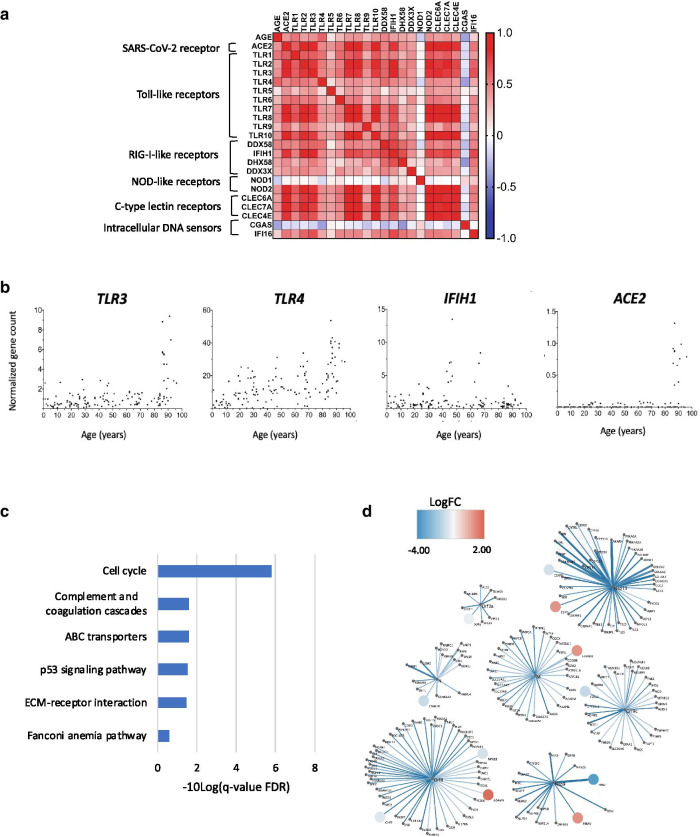Fig. 2.
Effect of age on the expression of pattern recognition receptor genes, enrichment results of high and low TLR4 expressors, and predicted interactions with SARS-CoV-2 proteins. a Correlation matrix comparing the relationships between age, ACE2 and 21 pattern recognition receptor genes. Pearson r, P values, and Confidence intervals of r are provided in Additional file 3: Suppl Table 3a-c. Age refers to the age of the individual from which the dermal fibroblast cell line was derived. b Normalized gene counts for TLR3, TLR4, IHIF1 and ACE2 expressed as a function of age. c Enriched KEGG pathways in differentially expressed genes (absolute log2FC > 1.0 and Adjusted P Value < 0.05) between dermal fibroblast cell lines with high (> 75th percentile) and low (< 25th percentile) expression of TLR4. Based on differentially expressed genes with an absolute log2FC > 1.0 and Adjusted P Value < 0.05). d Protein–protein interactions linking differentially expressed genes between oldest (≥ 80 years) and youngest (≤ 10 years) age groups and SARS-CoV-2 proteins. SARS-CoV-2 viral proteins are represented at the center of each module, with interacting human host proteins represented with circles. Differentially expressed gene color is proportional to logFC. Physical interactions among host and viral proteins are noted as thin black lines. Four genes (ADAM9, FBLN5, FAM8A1, CLIP4) that encode proteins that interact with SARS-CoV-2 had increased expression in the oldest compared to youngest age groups (shades of red)

